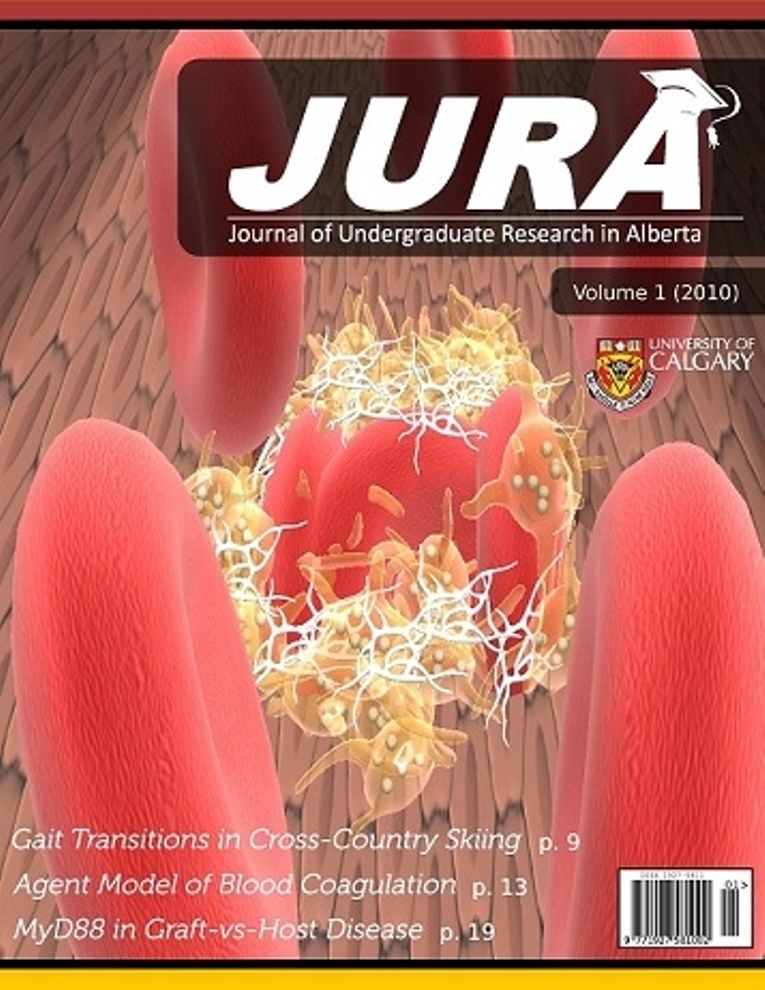An Agent-Based Simulation of Blood Coagulation Processes
Keywords:
Agent-based Simulation, Blood Coagulation, Swarm Graph Grammars, Lindsay ComposerAbstract
This article describes the creation of an agent-based model of blood coagulation within the Lindsay Composer (LC) computational framework, which can be used to simulate and visualize physiological processes inside the human body. Swarm Graph Grammars (SGG), a generic modelling language, are used to design the interaction behaviours of the involved bio- agents which represent the cellular and chemical structures found in human blood. Physical interactions among the agents, such as collisions and binding, are computed by an embedded physics engine. In order to effectively retrace and to accurately model coagulation, comparisons with the results of established mathematical models are drawn. The blood coagulation simu- lation accounts for the formation, expression, and propagation of blood clots within the injured area of a blood vessel. We demonstrate how 3-dimensional, interactive agent-based models and programming frameworks provide complementary tools for research, for learning and for exploring the complicated nature of physiological processes.
Downloads
References
[2] Z. Xu, N. Chen, M. M. Kamocka, E. D. Rosen, and M. Alber, “A multiscale model of thrombus development,” Journal of The Royal Society Interface, vol. 5, no. 24, pp. 705–722, 2008. [Online]. Available:
http://rsif.royalsocietypublishing.org/content/5/24/705.abstract
[3] C. Jacob and I. Burleigh, “Biomolecular swarms - an agent- based model of the lactose operon,” Natural Computing, vol. 3, pp. 361–376, 2004, 10.1007/s11047-004-2638-7. [Online]. Available:
http://dx.doi.org/10.1007/s11047-004-2638-7
[4] S. von Mammen, D. Phillips, T. Davison, and C. Jacob, “A graph-based
developmental swarm representation and algorithm,” in Swarm Intelli- gence, ser. Lecture Notes in Computer Science, M. Dorigo, M. Birattari, G. Di Caro, R. Doursat, A. Engelbrecht, D. Floreano, L. Gambardella, R. Groß, E. Sahin, H. Sayama, and T. Stu ̈tzle, Eds. Springer Berlin / Heidelberg, 2010, vol. 6234, pp. 1–12.
[5] M. Khanin and V. Semenov, “A mathematical model of the kinetics of blood coagulation,” Journal of Theoretical Biology, vol. 136, no. 2, pp. 127 – 134, 1989. [Online]. Available: http://www.sciencedirect.com/science/article/pii/S0022519389802206
[6] J. Jesty, E. Beltrami, and G. Willems, “Mathematical analysis of a proteolytic positive-feedback loop: Dependence of lag time and enzyme yields on the initial conditions and kinetic parameters,” Biochemistry, vol. 32, no. 24, pp. 6266–6274, 1993, pMID: 8512937. [Online]. Available: http://pubs.acs.org/doi/abs/10.1021/bi00075a021
[7] S. Baldwin and D. Basmadjian, “A mathematical model of thrombin production in blood coagulation, part i: The sparsely covered membrane case,” Annals of Biomedical Engineering, vol. 22, pp. 357–370, 1994, 10.1007/BF02368242. [Online]. Available: http://dx.doi.org/10.1007/BF02368242
[8] E. Beltrami and J. Jesty, “The role of membrane patch size and flow in regulating a proteolytic feedback threshold on a membrane: possible application in blood coagulation,” Mathematical Biosciences, vol. 172, no. 1, pp. 1 – 13, 2001. [Online]. Available: http://www.sciencedirect.com/science/article/pii/S0025556401000645
[9] A. L. Fogelson and R. D. Guy, “Platelet–wall interactions in continuum models of platelet thrombosis: formulation and numerical solution,” Mathematical Medicine and Biology, vol. 21, no. 4, pp. 293–334, 2004. [Online]. Available: http://imammb.oxfordjournals.org/content/21/4/293.abstract
[10] M. Anand, K. Rajagopal, and K. Rajagopal, “A model for the formation and lysis of blood clots.” Pathophysiology of haemostasis and thrombosis, vol. 34, no. 2-3, 2005. [Online]. Available: http://ukpmc.ac.uk/abstract/MED/16432312
[11] M. F. Hockin, K. C. Jones, S. J. Everse, and K. G. Mann, “A model for the stoichiometric regulation of blood coagulation,” Journal of Biological Chemistry, vol. 277, no. 21, pp. 18322–18333, 2002. [Online]. Available: http://www.jbc.org/content/277/21/18322.abstract
[12] N. Chen, J. A. Glazier, J. A. Izaguirre, and M. S. Alber, “A parallel implementation of the cellular potts model for simulation of cell-based morphogenesis,” Computer Physics Communications, vol. 176, no. 11-12, pp. 670 – 681, 2007. [Online]. Available: http://www.sciencedirect.com/science/article/pii/S0010465507002044
[13] S. von Mammen, T. Davison, A. Sarraf, V. Sarpe, I. Yazdanbod, and C. Jacob, “Swarm intelligence for everyone, accessible modelling and simulation of complex biological systems,” University of Calgary, Tech. Rep., 2010.
[14] Medical Physiology. Elsevier Saunders Inc, 2005.
[15] The swarming body, 1994.
[16] S. von Mammen, T. Davison, H. Baghi, and C. Jacob, “Component-
based networking for simulations in medical education,” Computers and
Communications, IEEE Symposium on, vol. 0, pp. 975–979, 2010.
[17] E. N. Sorensen, G. W. Burgreen, W. R. Wagner, and J. F. Antaki, “Computational simulation of platelet deposition and activation: I. model development and properties,” Annals of Biomedical Engineering, vol. 27, pp. 436–448, 1999, 10.1114/1.200. [Online]. Available:
http://dx.doi.org/10.1114/1.200
Downloads
Published
Issue
Section
License
Authors retain all rights to their research work. Articles may be submitted to and accepted in other journals subsequent to publishing in JURA. Our only condition is that articles cannot be used in another undergraduate journal. Authors must be aware, however, that professional journals may refuse articles submitted or accepted elsewhere—JURA included.


